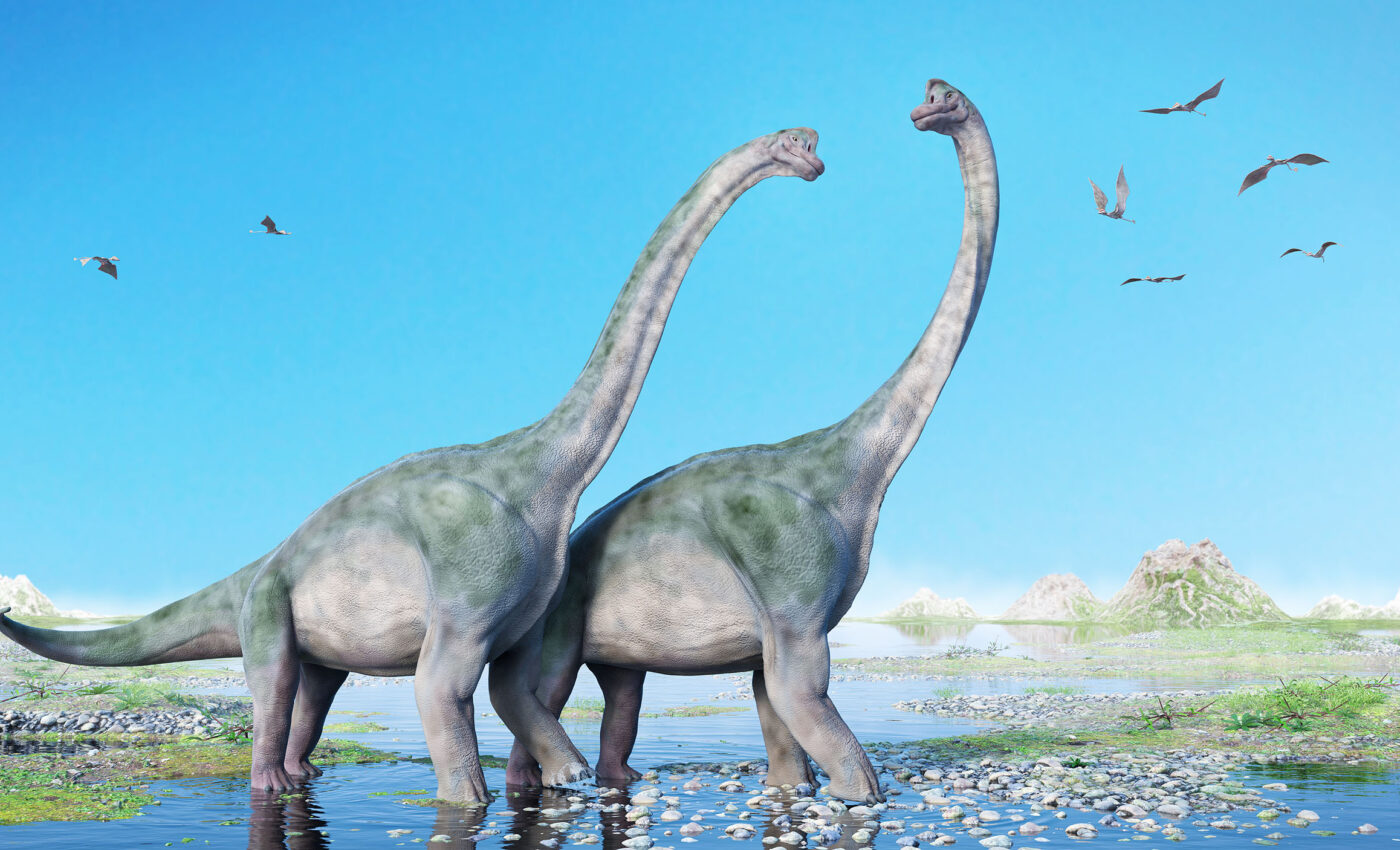
Scientists learn how super-giant Sauropods grew to be so massive
Sauropods, a group of dinosaurs that includes the iconic long-necked species such as Brachiosaurus and Apatosaurus, have long been known as the largest animals to walk the earth. Their massive size has been an enigma for scientists, and a new study now provides new insights into the remarkable evolution of these colossal creatures.
Paleontologist Michael D’Emic, an assistant professor of biology at Adelphi University in New York, is the author of the study titled “The Evolution of Maximum Body Size in Sauropod Dinosaurs.”
How the study was done
The research, published in the May 8 edition of Current Biology, challenges previous theories regarding the evolution of sauropods.
“It was previously thought that sauropods evolved their exceptional sizes independently a few times in their evolutionary history, but through a new analysis, we now know that this number is much higher, with around three dozen instances over the course of 100 million years around the globe,” D’Emic explained.
To study the evolution of sauropod body size, D’Emic compiled measurements of the circumferences of hundreds of weight-bearing bones and correlated them with the weight of the animal they belonged to.
He then employed a technique called ancestral state reconstruction to map the reconstructed body masses of nearly 200 sauropod species onto their evolutionary tree.
What the researchers learned
D’Emic’s research revealed that sauropods achieved their enormous sizes early in their evolution, with each new sauropod family giving rise to one or more lineages that independently reached immense proportions (see image here).
He further explained, “Before going extinct with the other dinosaurs (besides birds) at the end of the Cretaceous Period, sauropods evolved their unrivaled sizes a total of three dozen times.”
These super-sized sauropods were found to be ecologically distinct, exhibiting variations in the shapes of their teeth, heads, and body proportions, suggesting that they occupied different niches within the “large-bodied” category.
A microscopic study of their bones also indicated that these sauropods had different growth rates, implying that the record-setting dinosaurs were metabolically distinct.
D’Emic’s findings contradict the popular 19th-century theory known as “Cope’s Rule,” which proposed that animals’ size evolved over time. Instead, the new study suggests that animals achieve different body sizes depending on their ecological context and the available niches, a pattern that can appear random when examined on a larger scale.
“While other researchers have explained sauropods’ immense size in general based on their unique combination of features, there is no one feature or set of features that characterize the sauropods that did surpass terrestrial mammal size from the ones that didn’t,” D’Emic said.
As the research continues, the next step will be to untangle why certain lineages of sauropods evolved into super-giants while others did not, further unraveling the fascinating history of these awe-inspiring prehistoric creatures.
More about Sauropod dinosaurs
Sauropod dinosaurs were a group of long-necked, herbivorous dinosaurs that lived during the Mesozoic Era, approximately 252 to 66 million years ago. They are best known for their massive size and are considered the largest animals to have ever walked the Earth. Here is a summary of some key characteristics and information about sauropod dinosaurs:
Size and anatomy
Sauropods were characterized by their long necks, small heads, long tails, and columnar limbs. Their bodies were enormous, with some species measuring over 100 feet (30 meters) in length and weighing up to 100 tons. Examples of well-known sauropods include Apatosaurus, Brachiosaurus, and Diplodocus.
Diet
Sauropods were herbivores, feeding primarily on plants. Their long necks allowed them to reach high vegetation, while their peg-like teeth were adapted to strip leaves from branches. They likely swallowed their food whole or in large chunks, as their teeth were not suited for chewing. Some scientists believe they may have swallowed stones (gastroliths) to help grind up plant material in their stomachs.
Locomotion
Sauropods were quadrupedal, walking on all four limbs. Their limbs were strong and column-like to support their massive weight. The arrangement of their limbs varied between species; some had front limbs that were shorter than their hind limbs (e.g., Diplodocus), while others had front limbs that were longer or nearly equal in length to their hind limbs (e.g., Brachiosaurus).
Reproduction
Sauropods likely reproduced by laying eggs, as evidenced by the discovery of fossilized sauropod nests and eggs. Their eggs were relatively small compared to their body size, usually about the size of a grapefruit or cantaloupe. They may have laid their eggs in large nesting colonies, similar to modern-day sea turtles.
Social behavior
The social behavior of sauropods is still a matter of debate among paleontologists. Some evidence, such as trackways and bonebeds, suggests that they may have lived in herds or traveled in groups. Others argue that their size would have made group living difficult, and they may have been more solitary animals.
Evolution and extinction
Sauropods first appeared in the Late Triassic Period and diversified greatly during the Jurassic and Cretaceous periods. They became extinct at the end of the Cretaceous Period, around 66 million years ago, along with other non-avian dinosaurs.
Fossil record
Sauropod fossils have been found on every continent, indicating that they were widespread during their time on Earth. However, due to their size and the fragility of their bones, complete sauropod skeletons are rare. Most of what we know about sauropods comes from partial remains and isolated bones.
In conclusion, sauropod dinosaurs were a diverse group of large, long-necked herbivores that lived during the Mesozoic Era. Their massive size, unique anatomy, and global distribution make them one of the most intriguing and well-studied groups of dinosaurs.
—-
Check us out on EarthSnap, a free app brought to you by Eric Ralls and Earth.com.













